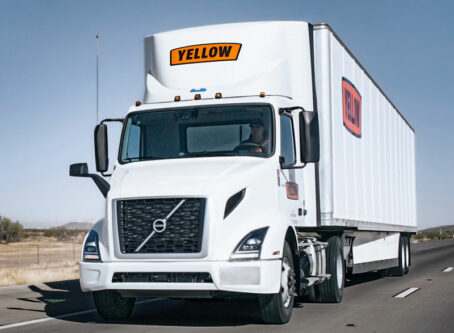DAT sues Convoy over Convoy for Brokers
There’s trouble in digital land – a nasty legal spat between load board provider Denver-based DAT Freight & Analytics and Seattle-based digital freight broker Convoy Inc.
In a 29-page complaint, DAT calls Convoy a “bad actor” that used DAT data illegitimately to create its own, competing load board. In a 43-page response, Convoy denies the accusations and in counterclaims calls DAT a “monopolist” and describes DAT’s load board as “antiquated in many ways.”
DAT filed its complaint in January with the U.S. Court in Oregon. In the filing, DAT claimed “Convoy sought access to the DAT load board to post its clients’ freight and to find carriers to ship that freight. In reality, however, Convoy was accessing the DAT load board in order to misappropriate data and trade secrets belonging to DAT, and to surreptitiously create its own competing load board by using DAT’s data and trade secrets.”
According to DAT, Convoy accessed DAT’s load board under contract beginning in 2016. But in November of 2021, DAT refused to renew its contract with Convoy. In the complaint, DAT says it had discovered Convoy was building a load board of its own using “data and trade secrets belonging to DAT.”
Shortly after their contract with DAT lapsed, Convoy issued a news release introducing its load board, Convoy for Brokers.
Convoy filed its answer to the DAT lawsuit in June, essentially denying all of the allegations and making a few of its own against DAT. For one thing, Convoy claims DAT is a monopoly that wields its power to restrain competition.
Echoes of the past
The lawsuit had flown under the radar, so to speak, until a logistics website reported on it in July. It is hardly the first lawsuit over load boards and allegedly poached data.
In the 1970s, Jubitz Truckstop in Portland, Ore., started what would later become DAT. It consisted of available loads written on index cards and pinned to a bulletin board. Most of the loads were along the I-5 corridor on the West Coast. Maybe bulletin boards were being used elsewhere, but it was Jubitz that in 1978 began displaying load information on a TV monitor. They gave it a name, Dial-A-Truck, hence the initials DAT.
Alone in the field, DAT was a virtual monopoly in those days with 500 Dial-A-Truck monitors at truckstops around the country. The boards were slow to update, so in 1995 DAT began transmitting real-time load data via satellite. But subscribers needed a desktop terminal and a satellite dish, something few small fleets and owner-operators could afford.
That was not the case for an upstart called Internet Truckstop that launched the same year. What eventually became Truckstop.com used a hot new medium called the internet. Its listings were easily available to anyone with a PC and a modem. DAT didn’t use the internet until two years later. By then, its virtual monopoly was lost.
Competitors pop up
After the success of Internet Truckstop, all kinds of competitors popped up. Many simply reposted loads from DAT, Internet Truckstop, and each other. The result was a number of lawsuits that – like the DAT-Convoy fight – played out in the background with little publicity.
Today there are literally hundreds of load boards, many belonging to brokers, including the largest broker of all, C.H. Robinson, which claims its board is the “largest in North America.”
According to its original complaint, DAT “seeks a permanent injunction to shut down and dismantle Convoy’s illegal load board, called ‘Convoy for Brokers.’”
Whether that happens or not, the outcome of the DAT lawsuit will have little impact on most truckers and brokers. But it will be interesting. LL
Business news is available on LandLine.Media.









